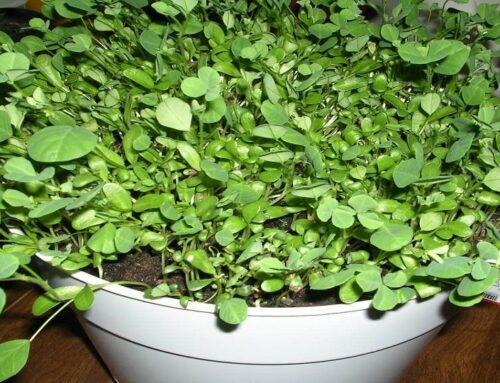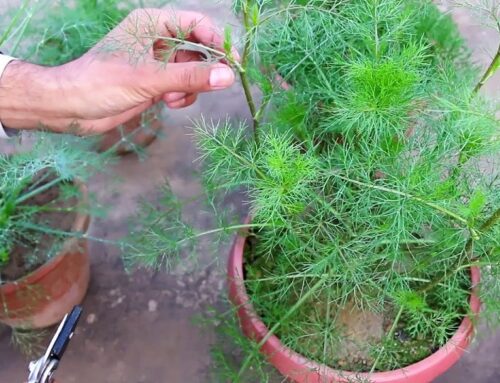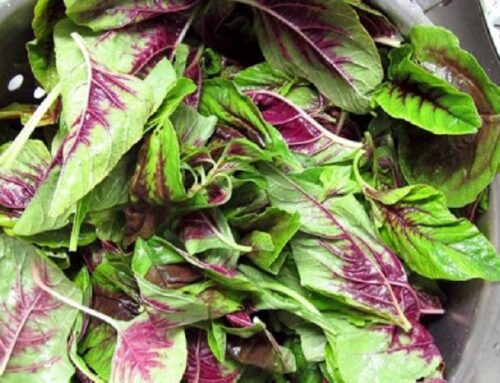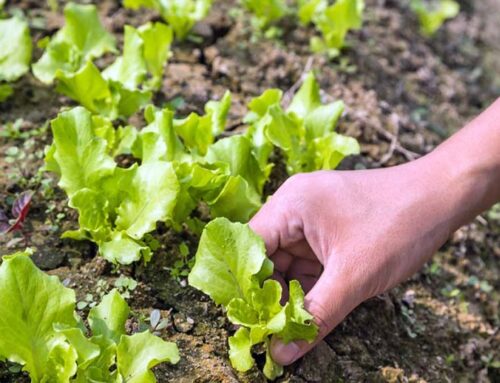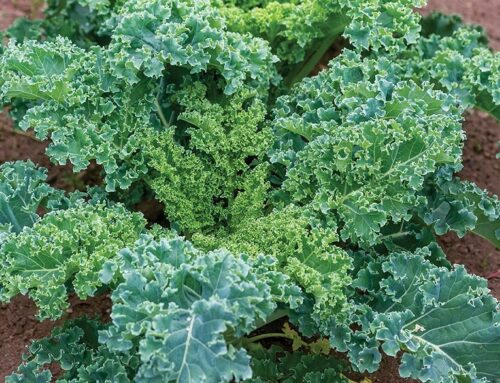Celery plants thrive well in a cool temperate climate and a humid environment. Celery plants prefer moderate and well-distributed rainfall for healthy vegetative growth. Celery can also be raised as an irrigated crop in dry conditions provided there is a well established irrigational system. However, both extreme and low temperatures are not good for its growth. Extreme temperatures may cause bitterness in celery leaves while the crop bolts at a temperature below 15°C.
Soil Requirements: Celery thrives well on well-drained loamy soils that are rich in organic matter. Celery plants are very sensitive to acid soils; hence pH of 6.6 is considered optimum for their growth.
Celery Varieties: There are many varieties of celery available in the market. Popular among them are as given below:
- Florida Golden: Popular variety in the Florida region of USA
- Wright Grove Giant: high-yielding, tall, Green Leaved medium-late variety, producing large, Celery white stalks of fine quality
- Fort Hook Emperor: a late variety having dwarf and stocky, solid, white, thick, broad and tender leaves
- Standard Bearer: An early variety having medium-tall plants, medium pink stems with white longitudinal streaks, sticks solid, good sized
Land Preparation: Land should be well prepared by ploughing and planking and pulverizing the top soil and leveling the land. Land preparation should be done at least a few months before planting the seedlings.
Propagation: Celery is propagated through seeds. Recommended seed rate is about 75-100 grams per acre of land.
Sowing Process: Sowing is done in the nursery beds to raise seedlings. Direct sowing in the main fields with regular irrigations may also be practiced. Sowing time is August–September in tropical regions and March–April in temperate regions. Soil temperature of about 15°–20°C is required for seed germination.
4-5 week old seedlings are transplanted in the main field after proper hardening process. Spacing in the main field is 60cm × 20cm.
Fertilizer Schedule: Recommended fertilizer dose is, 200 kg N (nitrogen); 100kg of P2O5 (phosphorous) and 150kg K2O (potash) per hectare for tropics and sub-tropics.
At the time of land preparation, a basal dose of 20–25 tons of farmyard manure (FYM) or compost is applied. 1/3 rd N is applied at planting time; another 1/3 rd of N 30–40 days after planting and remaining 1/3 rd of N is applied 15–20 days prior to first harvesting. Full doses of P and K are applied at planting time.
Irrigation Schedule: Frequent irrigations with proper drainage are required for successful celery cultivation. Irrigation should be scheduled in advance and regular irrigations should be done according to the plant requirements. First Irrigation is done immediately after transplanting and subsequent irrigations at 15–20 days interval. Later irrigations are given after every top dressing of nitrogenous fertilizers.
Weed Control: Either manual weed control or chemical weed control may be practiced for celery cultivation. Since it is a long duration crop, weed control is necessary and weeding should be carried out regularly. Biodegradable mulching is also helpful for weed control.
Hoeing: Light hoeing should be practiced regularly; during hoeing process, lateral shoots of the celery plants should be removed.
Blanching: Blanching is a common practice in the commercial production of celery. Blanching is the process by which petioles and associated leaves are protected from direct sunlight in order to prevent the development of chlorophyll in these parts. Major objective of proper blanching is to make the crop crisp; reduce acrid flavours in the leaves and petioles and also to enhance good flavour and tenderness.
Horticultural Maturity Indices: Harvesting stage of celery depends on the market demand that is when the overall field reaches the desired marketable size of 35 to 41 cm (14 to 16 inches) stalk length and before the outer petioles develop “pithiness.”Early harvests before the plants reach full size produce high market quality.
Since celery has very uniform crop growth, fields are harvested only once. During harvesting process, tender petioles along with the associated leaves should be harvested. Harvesting time is May in plains and November and April–May in the hills. Expected yield is 350–550 Quintals/Hectare.
Packing: Leaf stalks are packed by size after trimming outer petioles and leaves.
Quality Indices: Major quality indices for celery are the quality of petioles and associated leaves. Petioles and Associated Leaves should be well-formed with thick petioles that are compact, slender and straight. Petioles should be light green in color, and should be fresh. Other Quality Indices that are considered are the crop should be free of any defects i.e. freedom from defects such as bruises, blackheart, pithiness, seed stalks, cracks; and absence of insect damage, yellowing and decay.
Grades: Major U.S. Grades are Extra No. 1 and Extra No. 2. Grade “Unclassified” designates a lot which is not graded.
Packaging: Celery for local markets is normally field packed in 27.2 kg cartons containing 48 stalks. 12.7 kg cartons are used for packing 12 or 18 celery hearts. Celery hearts are prepared from celery petioles that are smaller than regular size. Heart preparation requires trimming of petioles to 20, 25, or 30 cm (8, 10, or 12 in) in length, and then packing in 8 or 13 kg (18 or 28 lb) cartons.
Pre-cooling: Hydro-cooling at 0 °C (32 °F) or Vacuum-cooling at 0 °C (32 °F) is recommended for celery.
Temperature and Relative Humidity: Optimum Temperature is 0°C (32°F) and optimum Relative humidity is 98-100%. At these optimum conditions storage life is up to 5 to 7 weeks.
Optimum Storage Conditions: Trench storage at room temperature or cold storage at 0°C at 95–98% is recommended. Celery should be stored in an isolated place as it easily absorbs other odours. Shelf Life in cold storage is for a period of 2–3 months. Storage-life is reduced to less than 2 weeks at 5 °C (41 °F). At more than 0 °C (32 °F), inner petioles may grow resulting in quality loss. Canning after proper blanching enhances preservation.
Controlled Atmosphere Storage: Reduced O2 (2% to 4%) and elevated CO2 (3% to 5%) delay senescence, leaf yellowing, and decay. However, at low O2 or high CO2, injuries may occur resulting in off-odours, off-flavours, and internal leaf yellowing.
Retail Outlet Display: For retail outlet display, bundled twist-tied celery stalks are displayed with or without a plastic sleeve. Pre-packaged consumer bags are the best display options for celery hearts. Top icing and misting is used to reduce moisture loss and maintain freshness.
Chilling Sensitivity: Celery is not chilling sensitive. Celery can be stored as cold as possible without freezing. The freezing point for celery is -0.5 °C (31.1 °F).
Ethylene production is low; i.e. < 0.1 µL kg-1 h-1 at 20 °C. The effect of ethylene is temperature and concentration dependent. Celery is not very sensitive to low concentrations of ethylene when exposure occurs at low temperatures. At temperatures above 5 °C, exposure to > 10 µL L-1 ethylene results in loss of green color and development of pithiness in celery stalks.
Physiological Disorders: Major post-harvest physiological disorders found in celery are pithiness, black heart, crushing, freezing injury, and brown check. A detailed account of these disorders is given below:
Pithiness: Pithiness is a major source of quality loss and decreased shelf-life in celery. It is characterized by the appearance of whitish regions and air spaces within the tissues and reduced tissue density, and is caused by the breakdown of the internal pith parenchyma tissues of the petiole to produce aerenchyma. Pithiness may be induced by pre-harvest factors, including cold stress, water stress, pre-bolting (seed stalk induction), and root infection. Storage temperature has a major impact on development of pithiness after pre-harvest induction. Progressive development of pithiness is delayed by storage at 0 °C (32 °F).
Blackheart: Blackheart is a physiological disorder caused by cell death resulting from calcium deficiency, and pre-harvest water stress. Internal leaves develop a brown discoloration which eventually becomes deep black. The cause is similar to tip-burn of lettuce or blossom- end rot of tomato. Although many predisposing factors may be involved, water-stress results in a calcium deficiency disorder causing cell death.
Brown check: Brown check is a disorder related to boron deficiency. It appears as cracks on the inner petiole surface and is also referred to as crack stem. The exposed tissues become brown and are susceptible to pathogen infection and decay.
Crushing: Crushing or cracking are signs of mechanical damage, and may lead to cracking rapid browning and decay. Harvesting, packing and handling should be done with great care to prevent damage to the highly sensitive turgid petioles.
Freezing Injury: Freezing injury starts at temperatures below -0.5 °C (31.1 °F). Symptoms of freezing injury include a water soaked appearance on thawing and wilted leaves. Mild freezing causes pitting or short streaks in the petiole which develop a brown discoloration with additional storage.
Diseases during Storage: Major diseases that affect celery during storage are bacterial soft rot, gray mold, and watery soft rot. A detailed account of these diseases is given below:
Bacterial soft rot: Bacteria soft rot is primarily caused by Pectobacterium spp. or Pseudomonas spp.
Gray mold: Gray mold is caused by Botrytis cinerea.
Watery soft rot: Watery soft rot is caused by Sclerotinia spp. Controlled atmospheres (1.5% o2+ 7.5% co2) have been shown to suppress the growth of Sclerotinia and watery soft rot.
Quarantine issues: There is no quarantine issues associated with the exports of celery leaves. However, export loads of celery may be fumigated at entry ports if common insects (aphids, thrips) are found.
We have a book on ‘Growing Celery‘….
Check out our publishing services here…
We publish top quality videos on various ‘Food & Agriculture’ topics. You may subscribe our video channel here…


